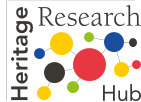Project facts
Presentation
The digital model is expected to become the representation (forever, for everybody, from everywhere) and research needs to acknowledge the changing role that reconstruction, reservation and conservation now play in the representation of heritage and its analysis. INCEPTION models will be able to improve a greater understanding of European cultural assets as well as a direct reuse for innovative and creative applications.
The 3D representations should go beyond current levels of visual depictions, support information integration/linking, shape- related analysis and provide the necessary semantic information for in-depth studies by researchers and users.
The generation of high quality 3D models is still very time-consuming and expensive. Furthermore, the outcome of digital reconstructions is frequently provided in formats that are not interoperable, and therefore cannot be easily accessed and/or re-used by scholars, curators or those working in cultural and heritage industries.
INCEPTION realises innovation in 3D modelling of cultural heritage through an inclusive approach for time-dynamic 3D reconstruction of artefacts, built and social environments. It enriches the European identity through an understanding of how European cultural heritage continuously evolves over long periods of time.
INCEPTION’s Inclusive approach introduces novel solutions of 3D digital modelling:
- Forever: INCEPTION “Time Machine” that represents an innovative use of time-scale for dynamic 3D reconstruction with emphasis on how the modelled cultural heritage evolves over time in association with its built and social environments;
- For everybody: portable, user-friendly and cost-effective hardware and software instruments for 3D capturing, modelling and analysis, as well as INCEPTION Semantic Web technologies and open-standard platform to creating and sharing understanding between various end-user group;
- From everywhere: INCEPTION’s proposed standard procedures for data acquisition and open-standard format for cultural Heritage Building Information Modelling (H-BIM).
Impacts & Results
INCEPTION has 3 major scientific and technological (S/T) objectives:
Objective 1: To create an inlcusive understanding of European cultural identity and diversity by stimulating and facilitating collaborations across disciplines, technologies and sectors.
- Enabling 3D digital reconstructions in an open-standart format for Heritage Building Information Model (HBIM). Such models will be easily accessible and reusable by researchers, scientists, experts and creative practitionners working in cultural and heritage industries in order to promote collaboration across sectors and facilitate cross-disciplinary researches, dissemination, education and business opportunities.
- Semantic integration of rich narratives with virtual and augmented realities to create accurate perception and deep understanding of specialists and common users. The accessibility and analytical quality of the models is supported by Semantic Web platform with Semantic Query function to retrieve rich data, as well as to interface between hardware and software for Virtual Reality (VR) and Augmented Reality (AR).
- Developping user apps for mobile devices to access and enrich the H-BIM. These apps are designed for specialists as well as common users to access the socio-economic significance for diffusion, dissemination, knowledge and enhancement of Cultural Heritage. The apps will also enable the users to enrich the models by including their opinions and impressions in a semantic-wiki way. Demonstration will be done involving the members of Stakeholder Panel, for which the Exploitation and Business Plans will be developed.
Objective 2: To develop cost-effective procedures and enhancements for on-site 3D surveys and reconstruction of cultural heritage artefacts, buildings, sites and social environments.
- Substantially enhancing the efficiency of three-dimensional data capturing procedures and devices, especially their suitability and aptitude for the physical cultural ressources and assets: cultural heritage sites, historical architectures, archaelogical sites and artefacts that are characterized vy smart handlilng of nonconventional charecteristics, location and geometries.
- Developing new methods for condition assessment survey of cultural heritage, which are based on predictive analysis (diagnostic, conservative, morphemetric), non-destructive procedures (thermal imaging, level of reflectivity, integrated sensors, spectrophotometry, sonic surveys, etc.) and will be supported by economically sustainable technologies and devices.
- Essential optimisation of hardware and software instruments for easy scan system, rapid capture of main features/geometric data, and automated data output in H-BIM environment.
Objective 3: To develop an open-standard Semantic Web platform for accessing, processing and sharing interoperable digital models resulting from 3D survey and data capturing.
- Developing a standard for managing 3D point clouds data at multiple scales from artefacts, buildings to envrionment and infrastructure, linked with GIS (Geo-spatial Information System)
- Defining an open-standard format and semantic ontology to generate high-quality, reliable and interoperable models of H-BIM (cultural heritage Building Information Model).
- Developing and testing APIs (Application Programming Interfaces) to allow both definitions, implementation and interoperabilty of varioussoftware and data models without compromising quality and functionality.
- Implementing multilevel database of 3D semantic models oriented towards various use cases, such as: understanding, enhancement, promotion, management, and enjoyment of cultural heritage and supporting conservation and restoration works.

